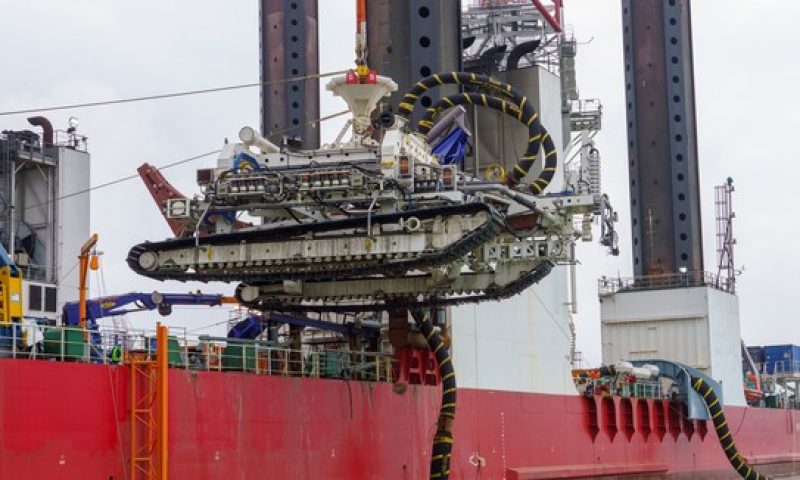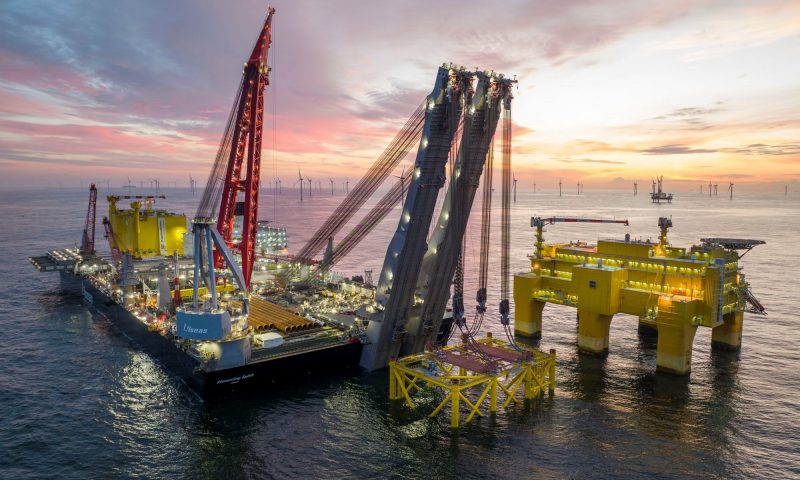
Deep Dig-It Trencher Buries High Voltage Cable for TenneT OWF
TenneT is building the Hollandse Kust (South) offshore grid to the north of the Maasvlakte, to connect new wind farms. Four cables will have to be routed into the North Sea seabed for this. The cables have to be buried more than 5 metres in the seabed for the first ten kilometres of the offshore cable route, as to be able to cross the busy Rotterdam Maasmond shipping lane. For this specific job, Van Oord designed and built the Deep Dig-It trencher, a gigantic and remotely controlled trencher. Van Oord, being part of the Van Oord-Hellenic Cables consortium, is conducting final tests with this enormous machine in the Alexiahaven (harbour) today, in preparation for the actual installation of the sea cables in July.
The Deep Dig-It is a so-called “Tracked Remotely Operated Vehicle” (TROV), which drives unmanned over the seabed, creating a deep trench for the cables, while simultaneously inserting the cables and then closing the trench again. Special about this new trencher is that it is the largest and most powerful machine in its class. The trencher weighs 125.000 kilos, is more than 17 metres long, well over 8 metres high, and 11 metres wide. It has an installed power of 2,500 HP, making it possible to bury cables into very hard soils. Next to the large power installed, the depth of burial that can be achieved by the trencher is unmatched: well over 5 metres. A lot of Marine ingenuity has been put into the Deep Dig-It, with the development of this new trencher Van Oord responds to a changing offshore wind market and its latest demands. The Deep Dig-It will be controlled from Van Oord’s offshore installation vessel MPI Adventure, which is equipped with a crane that launches and recovers the Deep Dig-It into the sea.

Hollandse Kust (South) offshore grid project
TenneT awarded the Van Oord-Hellenic Cables consortium in 2018, to build the connection from land to sea for the Hollandse Kust (South) offshore grid project. The consortium is installing and burying the sea cables crossing the entrance to Europe’s busiest freight port, the port of Rotterdam. The project will be completed in 2022: Alpha (700MW) in 2021 and Beta (700MW) in 2022, to deliver electricity for 1.6 million households. This offshore wind farm will thereby contribute significantly to the Dutch government’s target of having a total of 4.5 GW of installed offshore wind energy power by 2023.
The Hollandse Kust (South) offshore wind farm is 22 kilometres off the coast of the Dutch province of Zuid-Holland. The sea cables connect the two offshore platforms with the Maasvlakte high voltage substation and the Randstad 380 kV South ring. Wind energy is then transported to electricity consumers across the country through the national high voltage grid.















